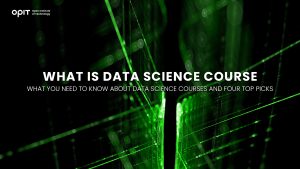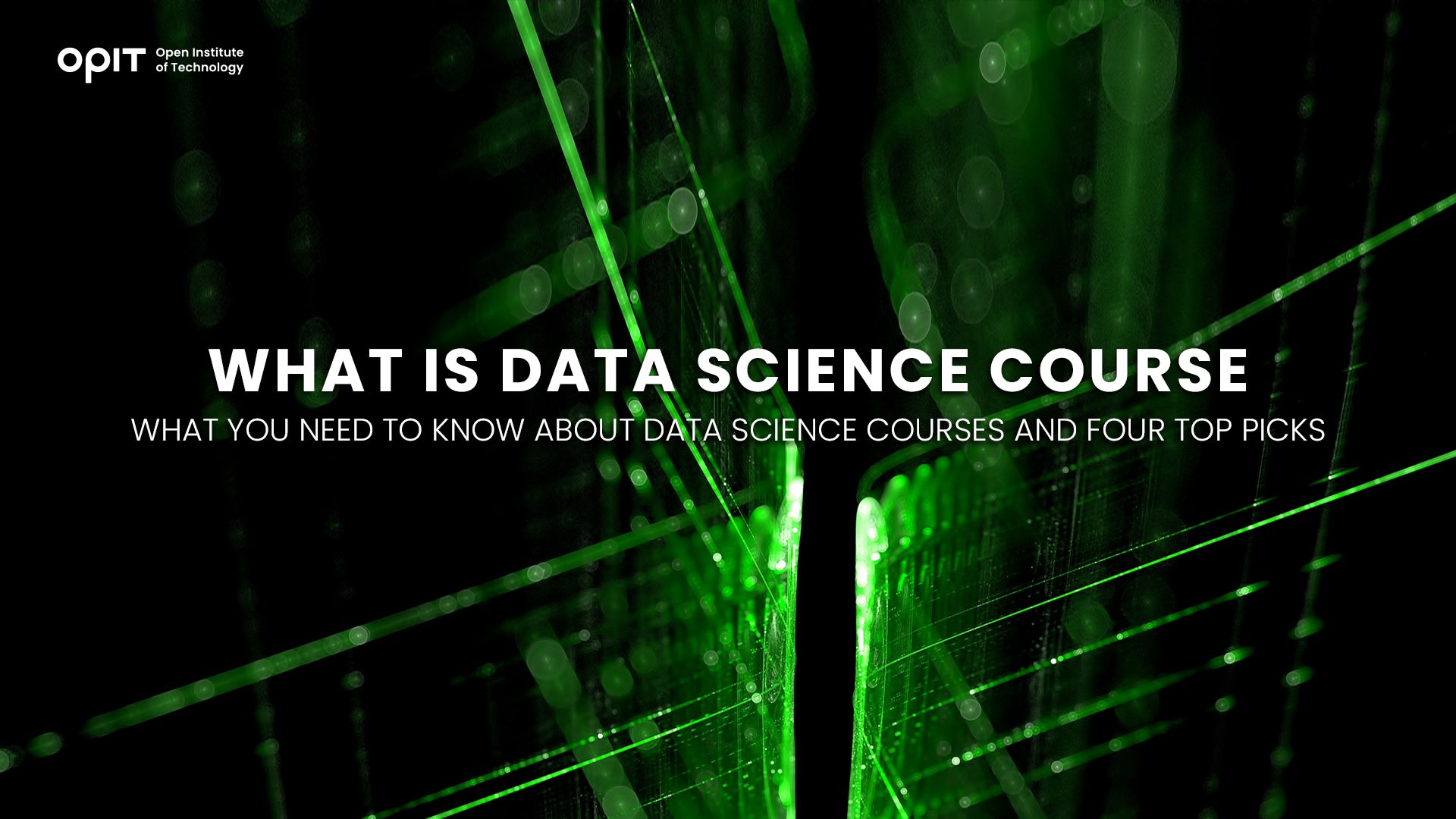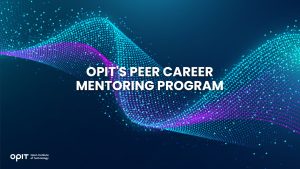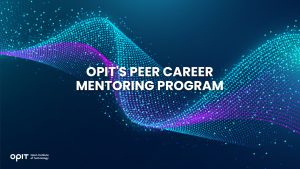

Combine mathematics with analytics, mix in programming skills, and add a dash of artificial intelligence, and you have the recipe for creating a data scientist. These professionals use complex technical skills to parse, analyze, and draw insights from complex datasets, enabling more accurate decision-making in the process.
As companies gather more data than ever before (both about their customers and themselves), these skills are in increasingly high demand. That’s demonstrated by data from the U.S. Bureau of Labor Statistics, which says that the number of data science jobs in the U.S. alone looks set to increase by 36% between 2021 and 2031.
That higher-than-average growth rate creates an opportunity for students, though grasping that opportunity requires a dedication to learning. This article explores the question of what is data science course material and highlights a selection of courses that set you on a data-propelled career path.
What to Expect From a Data Science Course
Answering the question of “what is data science course?” starts with examining the components of the typical course. Bear in mind that these components vary in nature and complexity depending on the specific course you take, though all are usually present.
Overview of Course Content
The content of a data science course is usually split into four core categories:
- Statistics and Probability – Math underpins everything a data scientist does, as they use numbers to spot patterns and determine the likelihood of various potential outcomes. Most data science courses delve into statistics and probability for this reason, with more advanced courses often requiring a degree in a field related to these areas.
- Programming – Whether it’s Python (the most popular data science programming language), R, or SQL, your course will teach you how to write in a language that machines understand.
- Data Visualization and Analysis – Anybody can collect reams of data. It’s the ability to visualize that data (and draw insights from it) that sets data scientists apart from other professionals. A good course equips you with the ability to use visualization tools to shine a spotlight on what a dataset actually tells you.
- Machine Learning and AI – The rise of machine learning transformed data science. Using algorithms created by data scientists, machines can analyze datasets presented to them and learn from the patterns to predict probabilities for different outcomes and even predict market trends. Your course will teach you how to create the algorithms that serve as a machine learning model’s “brain.”
Hands-On Projects and Real-World Applications
If you had the desire, you could read pages and pages on how to tune a car’s engine. But without practical and real-world wrench-in-hand experience working on an engine, you’ll never figure out how what you learn from books applies in the field.
The same line of thinking applies to data science, which is often so technically complex that it’s difficult to see how what you learn applies in the real world. A good data science course incorporates a real-world component through projects and exposure to faculty members who have direct experience in using the skills they teach.
Peer Collaboration and Networking
What is data science course for if not to learn how to become a data scientist? While learning the technical side is crucial, of course, a good course also puts you in contact with like-minded individuals who have the same (or similar) goals as you.
That contact helps you to build the collaborative skills you’ll need when you enter the workforce. But perhaps more importantly, it aids you in creating a network of peers who could lead you to job opportunities or work with you on entrepreneurial ventures.
Top Data Science Courses Available
With the components of a data science course established, you have a vital question to answer – what data science course should you take? The following are four suggestions (two online courses and two university courses) that give you a solid grounding in the subject.
Online Courses
Taking a data science course online gives you flexibility, though you may miss out on some of the collaborative and networking aspects that university-led courses provide.
Course 1 – What Is Data Science? (IBM via Coursera)
Coming with the stamp of approval from IBM, a leading name in the computer science field, this nine-hour course is suitable for beginners who want a self-paced learning approach. It’s part of a multi-part program (the IBM Data Science Professional Certificate) that’s designed to give you an industry-recognized qualification that could fast-track your entry into the field.
As for the course itself, it’s split into three parts, each containing multiple instructor-led videos and quizzes to test what you’ve learned. By the end, you’ll understand what data scientists do, build a basic understanding of various data science-related topics, and see how the profession relates to the modern business world. Granted, the course offers a surface-level understanding of the subject, with more complex topics examined in other classes. But it’s a superb tool for developing the foundation on which you can build with other courses.
Course 2 – Introduction to Data Science With Python (Harvard via edX)
Where IBM’s course equips you with general knowledge, Harvard’s online offering digs into the practical side of data science. Specifically, it focuses on using Python (and its many libraries) to solve data science problems drawn from real-world examples.
The course takes eight weeks, with study time between three and four hours per week. Ultimately, this class helps you build on your established programming skills and shows you how to apply them in a data science context.
As you may have guessed, that mention of building on existing skills means you’ll need a solid understanding of Python to participate in this free course. But assuming you have that, Harvard’s class is ideal for showing you just how flexible the language can be, especially when developing machine learning algorithms. Furthermore, simply having the word “Harvard” on your online certification adds credibility to your CV when you start applying for jobs.
University Programs
University programs demand a larger time (and monetary) commitment than purely online programs, though the upside is that you get a more prestigious qualification at the end. These two courses are ideal, with one even being a hybrid of online and university-level courses.
Course 1 – Master in Applied Data Science & AI (OPIT)
Let’s get the obvious out of the way first – you’ll need a BSc degree, or an equivalent, in a computer science or mathematical subject to take OPIT’s data science Master’s degree course.
Assuming you meet that prerequisite, this course comes in 18 and 12-month varieties, with the latter being a fast-tracked version that delivers the same content while asking you to dedicate more time to studying. It costs €6,500 to take, though early bird discounts are available, and an EU-accredited university delivers it.
The course eschews traditional exams by taking a progressive assessment approach to determine how well you’re absorbing the materials. It’s also focused on the practical side of things, with the application of data science in business problem-solving and communication being core modules.
Course 2 – MSc in Social Data Science (University of Oxford)
As the world’s leading university for seven consecutive years, according to Times Higher Education (THE) World University Rankings, the University of Oxford has outstanding credentials. And its MSc in Social Data Science is an interesting course to take because it specializes in a specific subject area – human behavior.
The degree stands on the precipice of an emerging field as it focuses on using data science to analyze, critique, and reevaluate existing social processes. It combines general machine learning models with more specialized data science tools, such as natural language processing and computer vision, to equip students with a high degree of technical knowledge.
That knowledge doesn’t come cheap, either in time or monetary commitment. The University of Oxford expects students to devote 40 hours per week to study, with overseas students having to pay £30,910 (approx. €35,795) to participate. While these investments are naturally intimidating, the university’s prestige makes the time and money you spend worthwhile when you start speaking to employers.
Factors to Consider When Choosing a Data Science Course
The four courses presented here each offer something different in terms of delivery and the expertise required of the student to participate. When choosing between them (and any other courses you find), you should consider the following questions:
- Does the course content and curriculum align with your career goals?
- Can you make time for the course within your schedule, and how much flexibility does it offer?
- Do the instructors provide the expertise you need and teach in a style that suits your preferred way of learning?
- Will you get an adequate return on your investment, both in terms of the prestige of the certification you receive and the knowledge you gain?
- Have past (or current) students recommended the course as a good option for prospective data scientists?
The Benefits of Completing a Data Science Course
Given the technical nature of the subject, you may be asking yourself what is data science course content going to deliver in terms of benefits to your life. The answers are as follows:
- Your skills improve your job prospects by putting you in pole position to enter a market that’s set for substantial growth over the next 10 years.
- The problem-solving and analytical tools you gain are useful in the data science field and other career paths.
- Any course you select puts you in contact with industry professionals who offer networking opportunities that could lead to a new job.
- You get to learn about (and experiment with) cutting-edge tools and technologies that will become the standard for modern business, and more, in the coming years.
What Is Data Science Course – It’s Your Route Into a Great Career
Let’s conclude by reiterating something mentioned at the start of the article – the data science sector will grow by 36% over the next decade or so.
That growth alone demonstrates the importance of data science, as well as why choosing the right course is so critical to your future success. With the right course, you make yourself a desirable candidate to organizations that are quickly accepting that they need data scientists to help them make decisions for the future.
Related posts

Source:
- Raconteur, published on November 06th, 2025
Many firms have conducted successful Artificial Intelligence (AI) pilot projects, but scaling them across departments and workflows remains a challenge. Inference costs, data silos, talent gaps and poor alignment with business strategy are just some of the issues that leave organisations trapped in pilot purgatory. This inability to scale successful experiments means AI’s potential for improving enterprise efficiency, decision-making and innovation isn’t fully realised. So what’s the solution?
Although it’s not a magic bullet, an AI operating model is really the foundation for scaling pilot projects up to enterprise-wide deployments. Essentially it’s a structured framework that defines how the organisation develops, deploys and governs AI. By bringing together infrastructure, data, people, and governance in a flexible and secure way, it ensures that AI delivers value at scale while remaining ethical and compliant.
“A successful AI proof-of-concept is like building a single race car that can go fast,” says Professor Yu Xiong, chair of business analytics at the UK-based Surrey Business School. “An efficient AI technology operations model, however, is the entire system – the processes, tools, and team structures – for continuously manufacturing, maintaining, and safely operating an entire fleet of cars.”
But while the importance of this framework is clear, how should enterprises establish and embed it?
“It begins with a clear strategy that defines objectives, desired outcomes, and measurable success criteria, such as model performance, bias detection, and regulatory compliance metrics,” says Professor Azadeh Haratiannezhadi, co-founder of generative AI company Taktify and professor of generative AI in cybersecurity at OPIT – the Open Institute of Technology.
Platforms, tools and MLOps pipelines that enable models to be deployed, monitored and scaled in a safe and efficient way are also essential in practical terms.
“Tools and infrastructure must also be selected with transparency, cost, and governance in mind,” says Efrain Ruh, continental chief technology officer for Europe at Digitate. “Crucially, organisations need to continuously monitor the evolving AI landscape and adapt their models to new capabilities and market offerings.”
An open approach
The most effective AI operating models are also founded on openness, interoperability and modularity. Open source platforms and tools provide greater control over data, deployment environments and costs, for example. These characteristics can help enterprises to avoid vendor lock-in, successfully align AI to business culture and values, and embed it safely into cross-department workflows.
“Modularity and platformisation…avoids building isolated ‘silos’ for each project,” explains professor Xiong. “Instead, it provides a shared, reusable ‘AI platform’ that integrates toolchains for data preparation, model training, deployment, monitoring, and retraining. This drastically improves efficiency and reduces the cost of redundant work.”
A strong data strategy is equally vital for ensuring high-quality performance and reducing bias. Ideally, the AI operating model should be cloud and LLM agnostic too.
“This allows organisations to coordinate and orchestrate AI agents from various sources, whether that’s internal or 3rd party,” says Babak Hodjat, global chief technology officer of AI at Cognizant. “The interoperability also means businesses can adopt an agile iterative process for AI projects that is guided by measuring efficiency, productivity, and quality gains, while guaranteeing trust and safety are built into all elements of design and implementation.”
A robust AI operating model should feature clear objectives for compliance, security and data privacy, as well as accountability structures. Richard Corbridge, chief information officer of Segro, advises organisations to: “Start small with well-scoped pilots that solve real pain points, then bake in repeatable patterns, data contracts, test harnesses, explainability checks and rollback plans, so learning can be scaled without multiplying risk. If you don’t codify how models are approved, deployed, monitored and retired, you won’t get past pilot purgatory.”
Of course, technology alone can’t drive successful AI adoption at scale: the right skills and culture are also essential for embedding AI across the enterprise.
“Multidisciplinary teams that combine technical expertise in AI, security, and governance with deep business knowledge create a foundation for sustainable adoption,” says Professor Haratiannezhadi. “Ongoing training ensures staff acquire advanced AI skills while understanding associated risks and responsibilities.”
Ultimately, an AI operating model is the playbook that enables an enterprise to use AI responsibly and effectively at scale. By drawing together governance, technological infrastructure, cultural change and open collaboration, it supports the shift from isolated experiments to the kind of sustainable AI capability that can drive competitive advantage.
In other words, it’s the foundation for turning ambition into reality, and finally escaping pilot purgatory for good.

The Open Institute of Technology (OPIT) is the perfect place for those looking to master the core skills and gain the fundamental knowledge they need to enter the exciting and dynamic environment of the tech industry. While OPIT’s various degrees and courses unlock the doors to numerous careers, students may not know exactly which line of work they wish to enter, or how, exactly, to take the next steps.
That’s why, as well as providing exceptional online education in fields like Responsible AI, Computer Science, and Digital Business, OPIT also offers an array of career-related services, like the Peer Career Mentoring Program. Designed to provide the expert advice and support students need, this program helps students and alumni gain inspiration and insight to map out their future careers.
Introducing the OPIT Peer Career Mentoring Program
As the name implies, OPIT’s Peer Career Mentoring Program is about connecting students and alumni with experienced peers to provide insights, guidance, and mentorship and support their next steps on both a personal and professional level.
It provides a highly supportive and empowering space in which current and former learners can receive career-related advice and guidance, harnessing the rich and varied experiences of the OPIT community to accelerate growth and development.
Meet the Mentors
Plenty of experienced, expert mentors have already signed up to play their part in the Peer Career Mentoring Program at OPIT. They include managers, analysts, researchers, and more, all ready and eager to share the benefits of their experience and their unique perspectives on the tech industry, careers in tech, and the educational experience at OPIT.
Examples include:
- Marco Lorenzi: Having graduated from the MSc in Applied Data Science and AI program at OPIT, Marco has since progressed to a role as a Prompt Engineer at RWS Group and is passionate about supporting younger learners as they take their first steps into the workforce or seek career evolution.
- Antonio Amendolagine: Antonio graduated from the OPIT MSc in Applied Data Science and AI and currently works as a Product Marketing and CRM Manager with MER MEC SpA, focusing on international B2B businesses. Like other mentors in the program, he enjoys helping students feel more confident about achieving their future aims.
- Asya Mantovani: Asya took the MSc in Responsible AI program at OPIT before taking the next steps in her career as a Software Engineer with Accenture, one of the largest IT companies in the world, and a trusted partner of the institute. With a firm belief in knowledge-sharing and mutual support, she’s eager to help students progress and succeed.
The Value of the Peer Mentoring Program
The OPIT Peer Career Mentoring Program is an invaluable source of support, inspiration, motivation, and guidance for the many students and graduates of OPIT who feel the need for a helping hand or guiding light to help them find the way or make the right decisions moving forward. It’s a program built around the sharing of wisdom, skills, and insights, designed to empower all who take part.
Every student is different. Some have very clear, fixed, and firm objectives in mind for their futures. Others may have a slightly more vague outline of where they want to go and what they want to do. Others live more in the moment, focusing purely on the here and now, but not thinking too far ahead. All of these different types of people may need guidance and support from time to time, and peer mentoring provides that.
This program is also just one of many ways in which OPIT bridges the gaps between learners around the world, creating a whole community of students and educators, linked together by their shared passions for technology and development. So, even though you may study remotely at OPIT, you never need to feel alone or isolated from your peers.
Additional Career Services Offered by OPIT
The Peer Career Mentoring Program is just one part of the larger array of career services that students enjoy at the Open Institute of Technology.
- Career Coaching and Support: Students can schedule one-to-one sessions with the institute’s experts to receive insightful feedback, flexibly customized to their exact needs and situation. They can request resume audits, hone their interview skills, and develop action plans for the future, all with the help of experienced, expert coaches.
- Resource Hub: Maybe you need help differentiating between various career paths, or seeing where your degree might take you. Or you need a bit of assistance in handling the challenges of the job-hunting process. Either way, the OPIT Resource Hub contains the in-depth guides you need to get ahead and gain practical skills to confidently move forward.
- Career Events: Regularly, OPIT hosts online career event sessions with industry experts and leaders as guest speakers about the topics that most interest today’s tech students and graduates. You can join workshops to sharpen your skills and become a better prospect in the job market, or just listen to the lessons and insights of the pros.
- Internship Opportunities: There are few better ways to begin your professional journey than an internship at a top-tier company. OPIT unlocks the doors to numerous internship roles with trusted institute partners, as well as additional professional and project opportunities where you can get hands-on work experience at a high level.
In addition to the above, OPIT also teams up with an array of leading organizations around the world, including some of the biggest names, including AWS, Accenture, and Hype. Through this network of trust, OPIT facilitates students’ steps into the world of work.
Start Your Study Journey Today
As well as the Peer Career Mentoring Program, OPIT provides numerous other exciting advantages for those who enroll, including progressive assessments, round-the-clock support, affordable rates, and a team of international professors from top universities with real-world experience in technology. In short, it’s the perfect place to push forward and get the knowledge you need to succeed.
So, if you’re eager to become a tech leader of tomorrow, learn more about OPIT today.
Have questions?
Visit our FAQ page or get in touch with us!
Write us at +39 335 576 0263
Get in touch at hello@opit.com
Talk to one of our Study Advisors
We are international
We can speak in:


